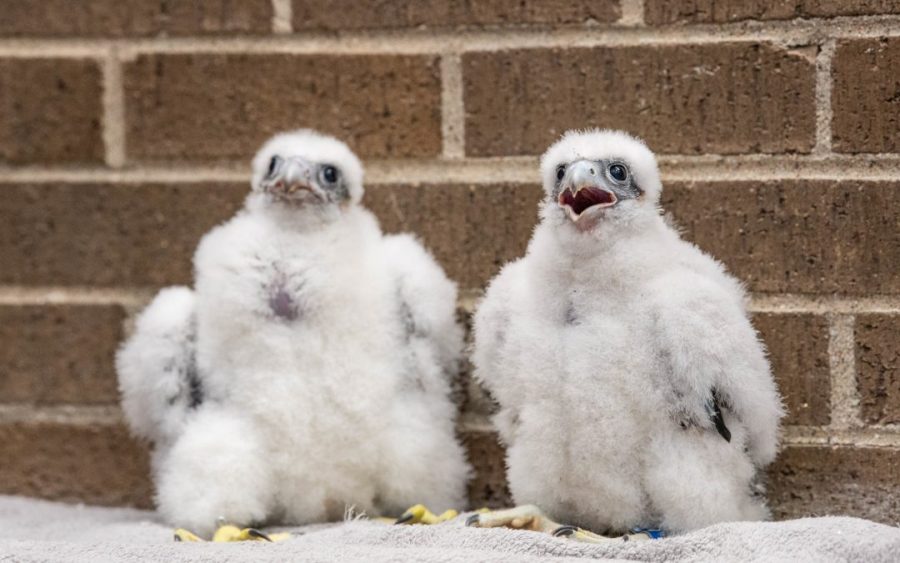Peregrine falcons hatched at UWO
October 2, 2019
Last June, two peregrine falcons hatched on the top of Gruenhagen Conference Center at UW Oshkosh in an effort to help increase the falcon population in Wisconsin.
The two falcons were named Foxy and Fondy in tribute to the additions of the access campuses, UWO-Fond du Lac and UWO-Fox Cities, based on name suggestions from the UWO campus community.
They received leg bands from conservationists and biologist Greg Septon, the founder of the Wisconsin Peregrine Falcon Recovery Project. Septon uses the leg bands to help keep track of the raptors’ population in the state.
Peregrines are the fastest animals on the planet, capable of reaching speeds of 200 mph when diving, making it possible for them to kill prey just from the impact of the dive. They’re aerial predators at the top of the food chain due to their precise eyesight.
In 1970, peregrine falcons were put on the endangered species list due to prolonged use of a pesticide called DDT. Because the raptors are top predators, they ingest DDT through their prey.
Septon said DDT caused the eggshells of peregrine falcons to thin, which would prevent offspring from developing. DDT was banned in 1972, and since then the falcon population has been increasing.
Septon said although peregrine falcon populations have been increasing, they are still greatly endangered in the Midwest.
“Out of only 37 successful nests this year in Wisconsin, only six were on natural cliffs,” Septon said. “The remaining 31 pairs all nested on the human-built structures where humans provide and maintain nest boxes for them.”
Septon’s project aims to restore native bird species that are endangered by building and maintaining nest boxes for the raptors while also getting the public interested in peregrine falcons.
Septon also tracked Foxy and Fondy’s parents. He said their mother, Julia, was found injured in Chicago in 2011 and was nursed back to health and released into the wild with a tracking band.
In 2015, Septon identified Julia near the Wisconsin River bridge where she had attempted to build a nest and failed.
The baby peregrines’ father, Gaylord, hatched at the UW-Green Bay Cofrin Library nest site in 2016 and has been nesting at Gruenhagen since 2018, Septon said.
He added peregrines tend to build their nests in very tall trees, but when they are not in an area where this is an option, they tend to be attracted to tall human-built structures.
Because Gruenhagen already had a nest box built for them, Julia and Gaylord chose that location for their nest.
Between May 10-11, Julia and Gaylord’s eggs hatched. Septon said he put a tracking bands on each falcon’s leg on June 1.
Septon said the tracking bands “allow us to follow them through their lives and document survival, fatalities, injuries, longevity, production and dispersal distances.”
Septon said the falcons are only monitored by identifying leg band numbers “either by spotting scopes, cameras and webcams, which means we currently don’t know where they are.”
However, Septon said not knowing where the falcons are located is somewhat of a positive sign because it means they haven’t been reported dead or injured.
“First-year mortality for peregrines is between 50 to 70%, so a good portion of the young produced each year are lost,” he said.
Septon said peregrines have always been the rarest raptor in Wisconsin and much of the Midwest, but he believes populations will continue to increase “as long as we, as environmental stewards, continue to provide and maintain nest sites for them.”














